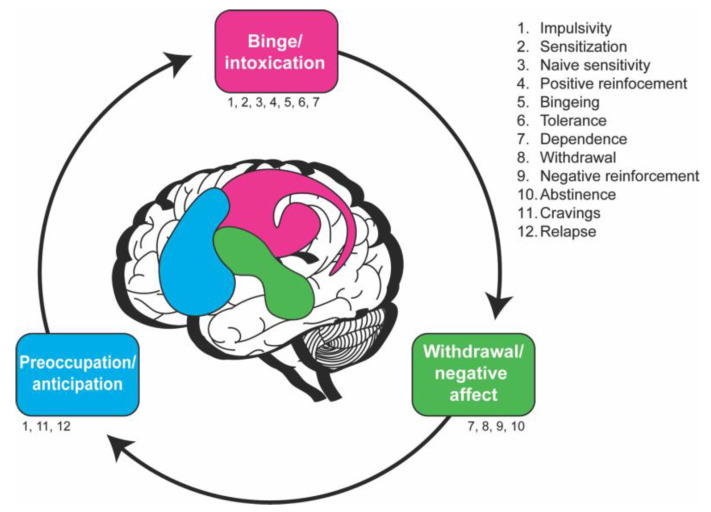Figure 1.
The cycle of addiction as explained with the neurobiological stage-based model in humans is characterized by proposed endophenotypes within each stage. The ventral tegmental area, substantia nigra, dorsal striatum, ventral and dorsal globus pallidus, and thalamus (pink) are involved in the binge/intoxication stage, while the extended amygdala and hypothalamus (green) are involved in the withdrawal/negative affect stage and the prefrontal cortex, hippocampus, insula, and basolateral amygdala (blue) are involved in the preoccupation/anticipation stage. The list (right) and text below each stage indicate the proposed behavioral characteristics of that stage. These endophenotypes are not necessarily stage-specific and some occur in multiple stages. This schematic is adapted from the Substance Abuse and Mental Health Services Administration [39].

